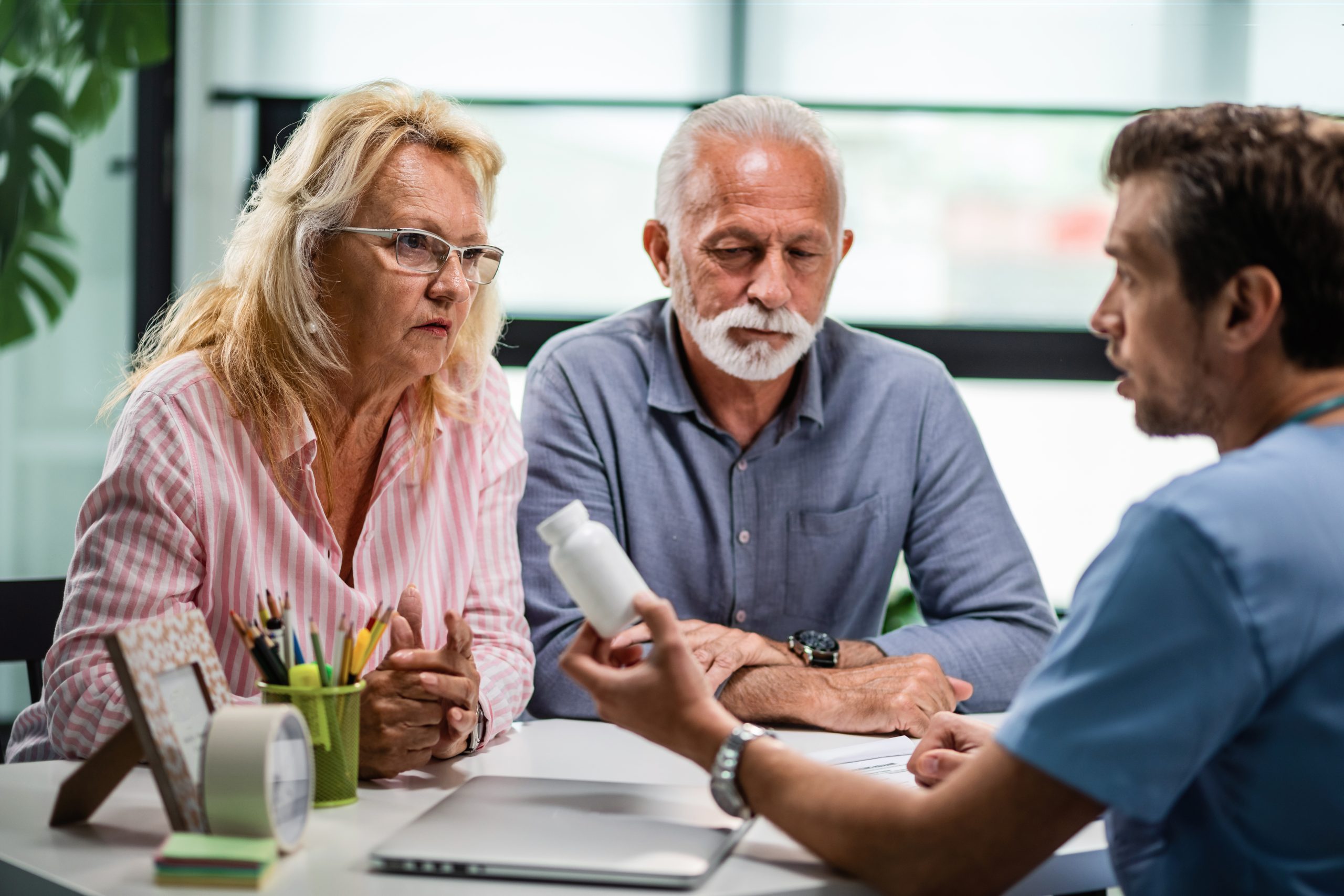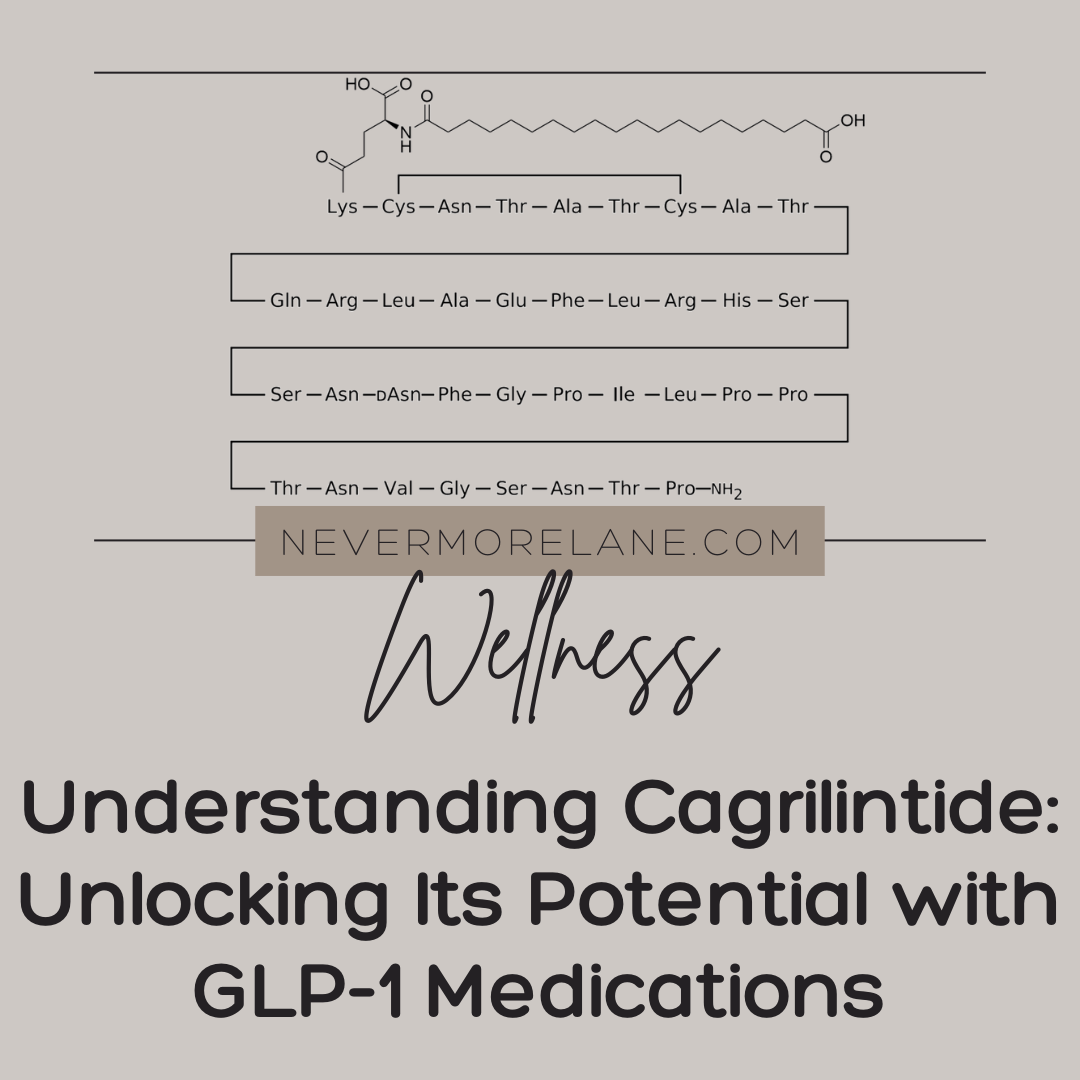When Weight Loss Medication Costs More Than Your Groceries: Finding Affordable Alternatives
The notification appears on your phone, and your stomach sinks before you even read it. Your insurance company has denied coverage for your weight loss medication. Again. Or maybe the email says your pharmacy benefit has been cut entirely, one more casualty of corporate restructuring and healthcare system shutdowns. You’ve been taking semaglutide or tirzepatide for months now, finally making progress after years of struggling, and suddenly you’re staring at a price tag of $900, $1,200, sometimes $1,400 per month. The same medication that was changing your life is now a luxury you can barely afford, competing with groceries, rent, and every other expense that keeps climbing higher.
I’ve heard this story dozens of times in recent months, and each time my heart breaks a little more. People shouldn’t have to choose between their health and their financial survival, yet that’s exactly the impossible decision being forced on thousands who’ve found hope in GLP-1 medications. The cruel irony is that these medications work. They’re helping people lose significant weight, improve their metabolic health, reduce their risk of diabetes and heart disease, and reclaim their quality of life. But what good is an effective treatment if you can’t afford to take it? The system has created a crisis where the people who need these medications most are being priced out of access entirely.
But here’s what I want you to know: losing your insurance coverage or facing impossible costs doesn’t have to mean the end of your weight loss journey. Alternative pathways exist through compounding pharmacies and GLP-1 peptide markets that can provide the same active ingredients at a fraction of the cost. These options aren’t without complexity or potential risks, and they require careful research and medical oversight, but they’re helping people continue treatment who would otherwise have to stop completely. In this post, we’ll explore the reality of the GLP-1 affordability crisis, the alternatives available to you, how to navigate them safely, and what you need to know to make informed decisions about your health and your budget.
Understanding the GLP-1 Affordability Crisis
The sticker prices for brand name GLP-1 medications like Zepbound range from approximately $900 to $1,400 per month without insurance coverage. Even generic semaglutide through traditional pharmacies often costs several hundred dollars monthly. For context, that’s more than many people’s grocery budgets, car payments, or utility bills. When these medications first gained popularity for weight loss, insurance companies initially provided coverage, making them accessible to a broader population. But as demand skyrocketed and the costs to insurers became apparent, coverage began disappearing rapidly.
The past year has seen unprecedented changes in the healthcare landscape. Insurance companies have implemented sweeping shutdowns and cutbacks, eliminating coverage for weight loss medications or creating such restrictive approval criteria that most people can’t qualify. Some plans that previously covered GLP-1 medications now categorize them as “lifestyle drugs” rather than medical necessities, removing them from formularies entirely. Others have raised copays to amounts that defeat the purpose of having insurance at all. Meanwhile, pharmaceutical companies have maintained their high prices, creating a perfect storm where the gap between drug cost and insurance coverage has widened into an unbridgeable chasm for many.
This affordability crisis hits hardest for middle income individuals and families who earn too much to qualify for patient assistance programs but not enough to absorb thousand dollar monthly medication costs into their budgets. Add in the rising prices of literally everything else, from groceries to gasoline to housing costs, and the financial pressure becomes unsustainable. People are faced with impossible math: continue the medication and cut other essentials, or discontinue treatment and watch their weight and health concerns return. Neither option feels acceptable, which is why so many are turning to alternative sources for these life changing medications.
Exploring Compounding Pharmacy Options
Compounding pharmacies represent one of the most accessible alternatives to brand name GLP-1 medications. Unlike traditional pharmacies that dispense manufacturer prepared drugs, compounding pharmacies create customized formulations by combining pure active pharmaceutical ingredients according to individual prescriptions. For semaglutide and tirzepatide, this means pharmacies can produce the same active compounds found in Wegovy, Ozempic, and Mounjaro at significantly reduced costs, often ranging from $200 to $400 per month depending on dosage and pharmacy.
The legality and legitimacy of compounded GLP-1 medications has been a topic of much discussion and some confusion. The truth is that compounding is a well established practice in pharmacy, regulated by state boards of pharmacy and overseen by organizations like the Pharmacy Compounding Accreditation Board. Compounding pharmacies are legally permitted to create medications when there’s a demonstrated need, such as drug shortages, specific patient requirements, or accessibility issues. The FDA has acknowledged ongoing shortages of semaglutide and tirzepatide, which has opened the door for compounding pharmacies to fill this gap. However, not all compounding pharmacies operate with the same standards of quality and safety, which makes careful selection absolutely critical.
When considering a compounding pharmacy, verification should be your first priority. Look for pharmacies that are accredited by the PCAB, which requires adherence to strict quality standards. Verify that the pharmacy is licensed in your state and check for any disciplinary actions or complaints through your state board of pharmacy. Ask detailed questions about where they source their active pharmaceutical ingredients, what testing procedures they use to verify purity and potency, and what quality control measures they have in place. Reputable compounding pharmacies will be transparent about their processes and happy to provide documentation. They should also require a valid prescription from a licensed healthcare provider and offer consultation with a pharmacist. If a pharmacy seems evasive about their practices, offers medications without requiring a prescription, or makes claims that sound too good to be true, consider that a red flag and look elsewhere.
Navigating the Peptide Market
The peptide market represents another alternative that some people are exploring for access to semaglutide and tirzepatide. This market exists somewhat differently from compounding pharmacies, often operating through research chemical suppliers or peptide vendors who sell these compounds labeled for research purposes. The pricing can be significantly lower than even compounding pharmacies, sometimes as little as $50 to $250 per month, which makes it tempting for people facing financial hardship. However, this market comes with considerably more complexity, risk, and legal gray areas that require serious consideration before proceeding.
Peptides purchased from research chemical suppliers are typically labeled as “not for human consumption” to navigate FDA regulations, yet many people do use them for exactly that purpose. The quality and purity of these products varies dramatically between suppliers. Some maintain rigorous testing standards and provide certificates of analysis from independent laboratories showing purity levels, while others operate with minimal oversight and may sell products that are underdosed, contaminated, or not what they claim to be at all. The lack of standardized regulation in this space means the burden falls entirely on the consumer to verify quality, determine proper dosing, understand reconstitution procedures if purchasing lyophilized powder, and monitor for adverse effects.
If you’re considering the peptide market, approach it with extreme caution and extensive research. Only consider suppliers who provide third party certificates of analysis for each batch, showing purity levels ideally above 98 percent and testing for contaminants. Read reviews and experiences from others in the community, though recognize that anecdotal reports aren’t substitutes for proper quality control. Understand that you’re taking on significantly more personal responsibility for your safety compared to pharmacy obtained medications. You’ll need to learn proper reconstitution techniques if purchasing powder, understand sterile handling procedures, calculate dosing accurately, and have a plan for medical monitoring. Most importantly, work with a healthcare provider who knows what you’re doing and can help monitor your health, even if they’re not prescribing the medication directly. Never attempt to use peptides without medical oversight, as complications can occur and you need professional support to address them safely.
Working with Healthcare Providers Through the Transition
One of the most important aspects of switching from brand name medications to compounding pharmacy or peptide alternatives is maintaining medical oversight throughout the process. Your healthcare provider plays a crucial role in ensuring your safety, monitoring your progress, adjusting your dosing, and watching for potential complications. Some providers are familiar with and supportive of these alternatives, while others may be hesitant or unfamiliar with options outside traditional pharmacies. Having an open, honest conversation with your provider about your financial situation and your intention to explore alternatives is essential for maintaining the medical support you need.
Start by explaining your financial reality candidly. Many healthcare providers don’t fully understand the out of pocket costs their patients face or the insurance coverage changes that have occurred. Share the specific numbers you’re dealing with and explain that continuing brand name medication isn’t financially sustainable for you. Ask if they have experience prescribing through compounding pharmacies or if they’re willing to learn about these options alongside you. Some providers are already prescribing compounded semaglutide or tirzepatide and can connect you with reputable pharmacies they trust. Others may need time to research and become comfortable with this approach. Provide them with information about accredited compounding pharmacies and offer to share resources that explain the regulatory framework and safety considerations.
If your current provider is unwilling or unable to support you in exploring alternatives, you may need to seek care with a provider who specializes in weight management and is familiar with the full range of options available. Telemedicine has expanded access to providers who work specifically with patients using compounded medications or who understand the economic realities their patients face. These providers can write prescriptions for compounding pharmacies, help you determine appropriate dosing, monitor your labs and vital signs remotely, and adjust your treatment plan as needed. Regardless of which pathway you choose, never attempt to use these medications without any medical oversight. Regular monitoring of your weight, blood pressure, heart rate, blood sugar levels, and general wellbeing is essential for catching potential problems early and ensuring the treatment remains both safe and effective for your individual situation.
Making Safe and Informed Decisions
The decision to pursue alternatives to brand name GLP-1 medications isn’t one to make lightly or impulsively. It requires research, careful consideration of risks and benefits, honest assessment of your ability to manage additional responsibilities, and commitment to prioritizing safety above cost savings alone. While financial constraints are real and valid, your health must remain the ultimate priority. Taking a medication that’s improperly dosed, contaminated, or poorly manufactured could cause serious harm that far outweighs any money saved.
Start by thoroughly researching any compounding pharmacy or peptide supplier you’re considering. Look beyond their website marketing to find independent reviews, check accreditation status, verify licenses, and investigate their reputation within the medical community. Join online communities where people discuss their experiences with various sources, but maintain a critical eye and recognize that not all advice you’ll encounter is equally reliable or safe. Create a checklist of questions to ask potential suppliers about their sourcing, testing, quality control, and safety procedures. Don’t rush this process. Taking an extra week or two to properly vet your options is far better than hastily choosing a questionable source and regretting it later.
Understand what you’re committing to when you choose an alternative pathway. With compounding pharmacies, you’ll typically work through a process similar to traditional pharmacies, though you may need to coordinate between your healthcare provider and the pharmacy more actively. With peptide suppliers, you’re taking on significantly more personal responsibility for storage, reconstitution if necessary, dosing accuracy, and sterile technique. Educate yourself thoroughly on proper injection procedures, signs of infection, and symptoms that should prompt immediate medical attention. Keep detailed records of your dosing, side effects, weight changes, and overall response to treatment. This documentation helps you and your healthcare provider assess whether your alternative source is providing medication that’s working as expected and allows for informed adjustments to your treatment plan.
Finally, maintain realistic expectations and flexibility. The landscape for GLP-1 access is changing rapidly, with new compounding pharmacies entering the market, regulatory discussions ongoing, and potential for insurance coverage to shift again in either direction. Stay informed about developments in this space, remain in close contact with your healthcare provider, and be prepared to adapt your approach if your current solution becomes unavailable or unsafe. Your goal is sustainable, long term access to effective treatment, which sometimes means being willing to change course when circumstances require it.
Finding Your Path Forward
The affordability crisis surrounding GLP-1 medications feels overwhelming and deeply unfair. You’ve found something that works, that’s genuinely improving your health and quality of life, and now financial barriers threaten to take that away from you. That frustration is valid, and the anger at a system that prices life changing medications beyond reach for so many people is justified. But please don’t let that frustration push you toward despair or toward unsafe choices made in desperation. Alternatives exist, and while they require more effort and diligence than simply picking up a prescription at your local pharmacy, they’re helping thousands of people continue their weight loss journeys despite impossible costs.
Whether you choose to work with an accredited compounding pharmacy, carefully navigate the peptide market with proper medical oversight, or find another solution entirely, remember that you’re not alone in facing these challenges. The community of people dealing with the same financial barriers is large and growing, and within that community exists collective wisdom, shared resources, and mutual support. Seek out others who’ve walked this path before you, learn from their experiences, and contribute your own knowledge as you navigate your journey. But always filter advice through the lens of safety and always prioritize guidance from qualified healthcare professionals over anecdotal suggestions from internet strangers.
Your health matters, your wellbeing matters, and your access to effective treatment matters. The system has failed you by creating barriers between you and the medication you need, but that doesn’t mean your options have run out completely. It means you have to work harder and smarter to find your way forward, and that’s not fair, but it’s the reality we’re currently facing. Approach this challenge with patience, thoroughness, and unwavering commitment to your safety. Make informed decisions based on solid research rather than rushed choices driven by panic. And know that every step you take toward sustainable access to treatment is a step toward reclaiming your health on your own terms, regardless of what insurance companies or pharmaceutical corporations decide you can afford.
I’m here with you in this journey, sharing what I know and learning alongside you as the landscape continues to evolve. Browse through more posts on Nevermore Lane where we explore not just weight loss and wellness, but the magic of persisting through challenges and finding creative solutions when conventional paths close. And whenever you need encouragement, perspective, or just someone who understands the frustration of fighting for your health in a broken system, join me for coffee. There’s always a seat at my table for people who refuse to give up on themselves, no matter what obstacles appear in their way. You’ve got this, and you don’t have to figure it all out alone.
Like what you read? Drop me a line – let’s chat over virtual coffee.
~ Chrystal






